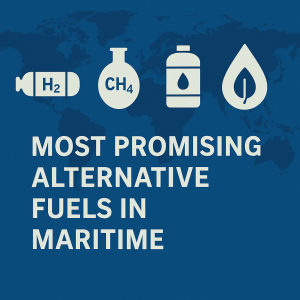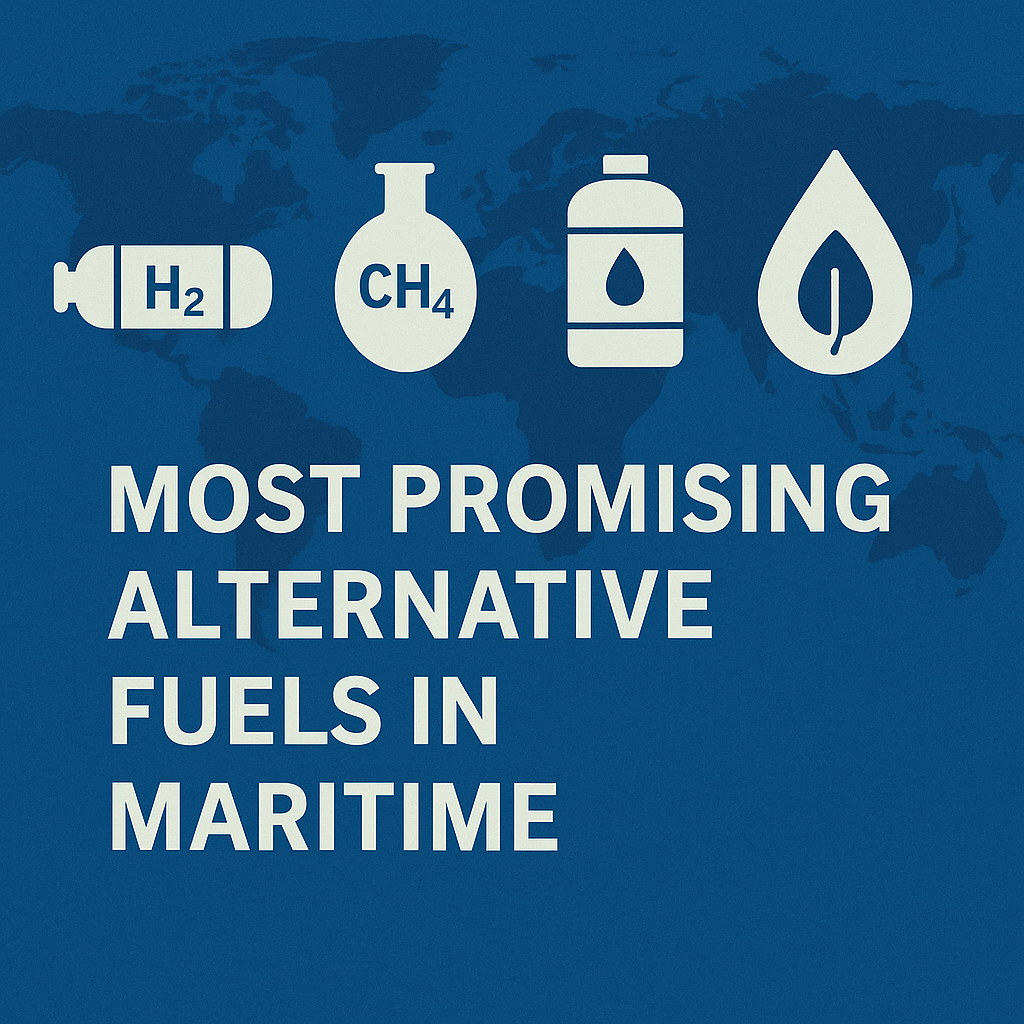Discover which alternative fuels DNV identifies as the most promising for shipping’s decarbonization journey. Explore key insights, technological pathways, industry trends, and real‑world applications in this comprehensive guide.
Why this matters in modern maritime operations
 Imagine steering a massive container ship through the evening haze—each engine stroke belching out emissions, regulations tightening like a vise, and visionaries calling for cleaner horizons. That’s the world shipping finds itself in today. With global trade relying heavily on sea transport and shipping accounting for nearly 3 % of global greenhouse gas emissions, according to the IMO, the urgency to explore cleaner fuels and technologies has never been clearer.
Imagine steering a massive container ship through the evening haze—each engine stroke belching out emissions, regulations tightening like a vise, and visionaries calling for cleaner horizons. That’s the world shipping finds itself in today. With global trade relying heavily on sea transport and shipping accounting for nearly 3 % of global greenhouse gas emissions, according to the IMO, the urgency to explore cleaner fuels and technologies has never been clearer.
DNV, a leading classification society, offers a roadmap for this transition. Its Maritime Forecast to 2050 series evaluates alternative fuels, technologies, and pathways to help maritime professionals, students, and enthusiasts navigate toward net-zero.
This article shines a light on DNV’s vision: which fuels hold the most promise, what challenges lie ahead, and what real-world shifts are already underway.
Key alternative fuels and technologies driving change
DNV points to a diverse mix of alternative fuels and technologies—no single winner, but a landscape of evolving options.
LNG, LPG, methanol, biofuel, hydrogen—and emerging contenders
LNG and LPG: DNV sees these as transitional options with mature infrastructure and regulations. LNG produces significantly less CO₂ than oil, though methane slip—a potent greenhouse gas—remains a concern..
Methanol & biofuels: When sourced renewably, methanol and biofuels offer low well-to-wake emissions. Biofuels like HVO (hydrotreated vegetable oil) or FAME (fatty acid methyl ester) are “drop-in” solutions compatible with existing engines—but feedstock sustainability and cost remain challenges.
Hydrogen & ammonia: Green hydrogen is the cleanest, but low energy density and storage volume pose logistical barriers for deep-sea shipping. Ammonia, especially when derived from renewables, looks promising—DNV calls it the most realistic carbon-neutral fuel for newbuilds, thanks to lower conversion and storage costs compared to hydrogen
Ammonia, further, is gaining interest beyond DNV’s earlier assessments and is increasingly seen as a key future fuel though still unseen in IMO IGF Code (International Code of Safety for Ships using Gases or other Low-flashpoint Fuels).
Technological enablers and efficiency gains
DNV emphasizes that, even while fuel supply remains limited, technological and operational efficiency measures provide immediate impact.
Energy efficiency measures—such as optimized hulls, speed reduction (slow steaming), machinery improvements, and voyage planning—could reduce fuel and CO₂ usage by 4–16 % by 2030. At the high end, that equates to 40 Mt of fuel and 120 Mt of CO₂ avoided—comparable to powering the 2,500 largest ships with carbon-neutral fuel.
Emerging technologies: Onboard carbon capture (OCC), shore power, batteries, fuel cells, wind-assisted propulsion, air lubrication, waste-heat recovery, and digitalization are promising tools to bridge the gap until carbon-neutral fuels scale up. Onboard carbon capture may be more cost-effective than scarce, expensive sustainable fuels.
Digital systems provide transparency in emissions, enable energy‑saving optimization, and facilitate compliance with pooled regulatory frameworks like EU’s FuelEU Maritime and ETS.
What’s happening in real time: adoption trends and case studies
Ships on order: In 2024 alone, DNV’s Alternative Fuels Insight (AFI) platform recorded 515 alternative-fuelled vessels ordered—a 38 % increase over the previous year. LNG dominated with 264 orders; methanol followed with 166; ammonia made inroads with 27 orders (including the first non-gas-carrier ammonia vessels).
LNG’s leadership—and debate: More than two-thirds of 2024’s alternative-fuel orders were LNG-capable. Some companies like Mitsui OSK Lines defend LNG as a practical transition fuel; others, like Maersk, warn its continued support may delay investment in zero-carbon options like ammonia and green methanol.
Technological hedging: Major carriers—including Maersk, CMA CGM, COSCO—are investing in dual-fuel vessels compatible with multiple alternative fuels (LNG, methanol, hydrogen, ammonia), offering flexibility amid regulatory and supply uncertainty.
Regulatory drivers: The EU’s FuelEU Maritime and shipping’s inclusion in ETS (effective 2024) are raising costs for high-carbon fuels, nudging operators toward biofuel blends or LNG. Pooling mechanisms allow emissions credits across fleets.
At the IMO level, the upcoming Net‑Zero Framework aims to impose a global carbon pricing system—possibly up to USD 100 per tonne starting around 2028—creating stronger incentives for cleaner fuels.
Efficiency now, fuel later: Energy-efficiency gains—via hull cleaning, modern coatings, voyage planning, wind-assist—are delivering immediate up to 15 % fuel savings, at lower cost and higher certainty than future fuel bets.
Human dimension: Going green isn’t just technical—by 2030, around 450,000 seafarers will need training in handling new fuels like ammonia; by mid-2030s, that number could rise to 800,000. Initiatives like the EU’s SkillSea aim to support this skills shift.
Real‑world example: Fortescue’s Green Pioneer, partly ammonia‑powered, demonstrates tangible innovation, while Maersk’s investments in dual‑fuel ships and e‑methanol supply chains signal strategic commitment to greener options.
FAQs
Q1: Which alternative fuel does DNV see as the most promising?
DNV doesn’t crown a single fuel. Ammonia shows promise for new vessels due to storage/conversion advantages; LNG leads now as a transition fuel; renewable methanol, biofuel, and hydrogen each hold potential depending on supply and technology maturity.
Q2: Why isn’t hydrogen widely adopted yet?
Green hydrogen is cleanest but has very low energy density—making it impractical for long-haul shipping without major design overhauls and volume increases.
Q3: How effective are efficiency measures compared to alternative fuels?
Very effective—efficiency improvements alone could deliver up to 16 % fuel savings by 2030, reducing near‑term fuel demand while decarbonisation pathways mature.
Q4: Is DNV seeing growing uptake of alternative-fuel vessels?
Yes—the AFI platform reported a 38 % year-on-year increase in orders for alternative‑fuelled ships in 2024; LNG, methanol, and ammonia vessels are gaining traction.
Q5: How are regulations pushing this shift?
EU regulations like FuelEU Maritime and ETS increase cost of emissions and incentivize cleaner fuels. IMO’s Net‑Zero Framework will introduce global carbon pricing and stricter emission targets.
Conclusion & Call to Action
Shipping stands at a crossroads—no single green fuel will solve the climate puzzle. Through DNV’s Maritime Forecast to 2050, we learn that:
-
A fuel mix approach including LNG (as transition), methanol, biofuels, ammonia, hydrogen, and onboard carbon capture is most likely.
-
Efficiency gains are stepping stones that reduce emissions now and ease future transition.
-
Technology flexibility, policy certainty, and maritime collaboration are equally vital.
What can you do today?
Whether you’re a student, maritime professional, port authority, or policymaker—explore tools like DNV’s Alternative Fuels Insight (AFI) to stay informed. Advocate for green shipping corridors, support sailor upskilling, and champion energy efficiency aboard vessels. Dive into DNV’s detailed Maritime Forecast to 2050 (2024 edition) for scenario analysis and guidance.
The winds of change are rising—smart planning, flexibility, and action now will steer shipping toward a sustainable, cleaner horizon.
References
-
DNV. Maritime Forecast to 2050 (2024 edition). Key highlights including fuel savings, energy‑efficiency impact, onboard carbon capture, and cost modeling.
-
DNV. Alternative Fuels – The future of greener maritime shipping: LNG, LPG, methanol, biofuel, hydrogen overview.
-
DNV. Alternative‑Fuel Assessment guidance: including ammonia’s rising role.
-
DNV. Alternative Fuels Insight (AFI) platform description.
-
DNV. Vessel order trends in 2024 (515 orders, 38 % growth).
-
DNV report launch – three‑step decarbonization approach.
-
Industry and regulatory context from Reuters: FuelEU Maritime, energy efficiency, new fuels.
-
Reuters on industry tension over LNG regulation.
-
Wikipedia: IMO Net‑Zero Framework global carbon pricing.
-
Wikipedia: Decarbonization of shipping strategies and target context.


Thanks!